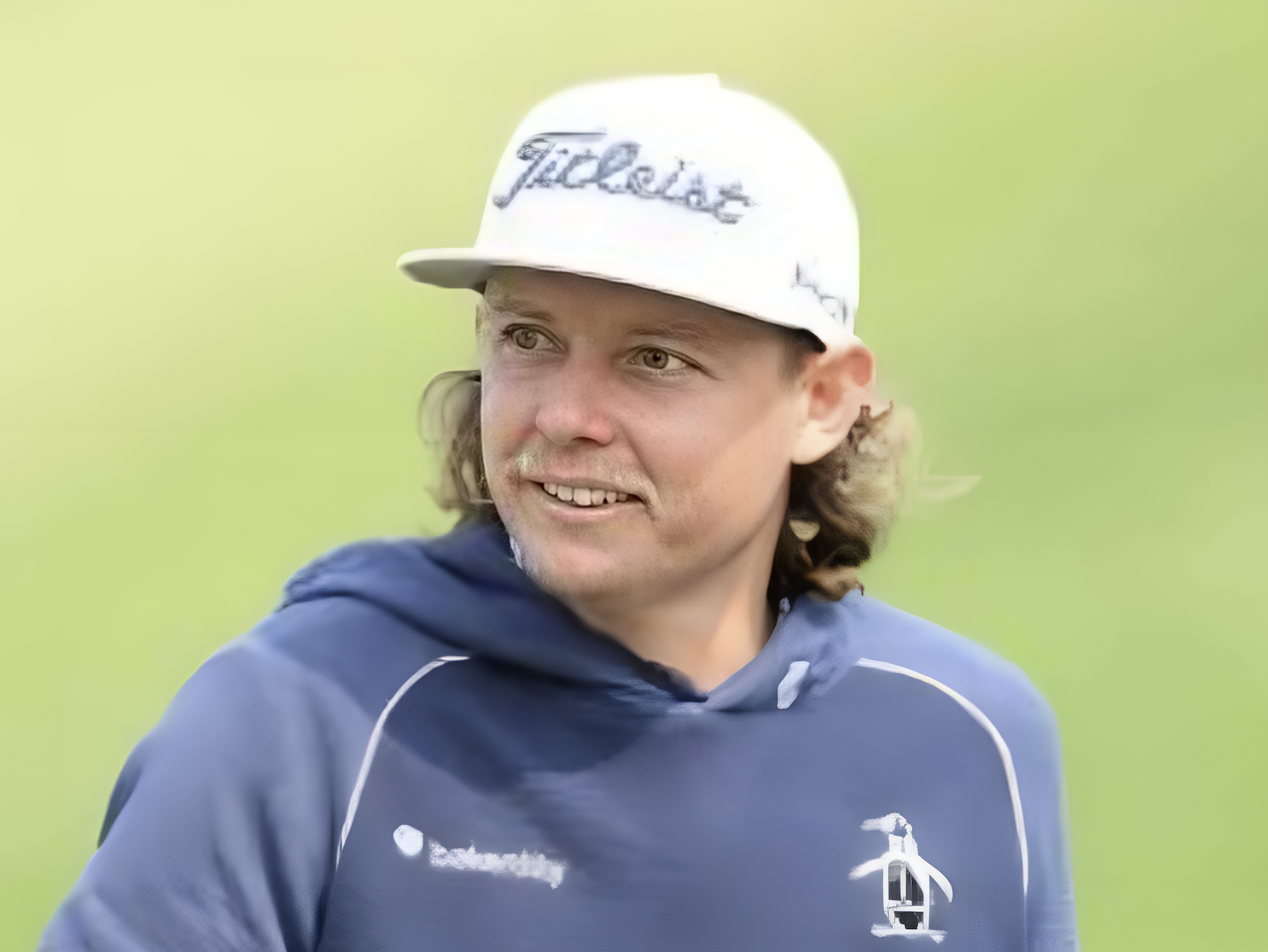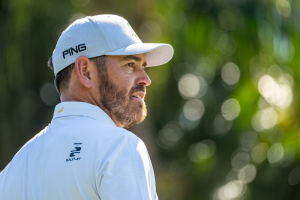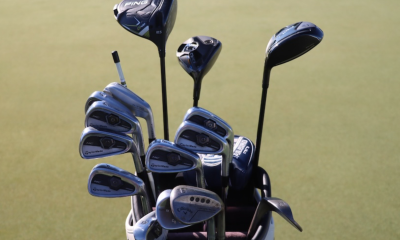Opinion & Analysis
Navigating the Brave New World of Online Golf Instruction

Online golf lessons are cheap and fast. And if you do a search on Google, the choices are extensive. Getting started can be summed up in three steps — shoot a video with your mobile phone, upload it to the one of many different websites that offer the service and await feedback from a PGA professional of your choosing. By contrast, working with a local pro requires finding one nearby, booking their time in advance and driving however long to the course for the sake of making a couple of dozen supervised swings in less than the time it takes to bake a cake — usually, for a premium fee.
If you believe the old axiom, “you get what you pay for”, then traditional instruction should easily trump any lesson you take online. The individualized attention you receive from working side-by-side with an instructor has undeniable merit. The question then is how much is that benefit worth? In 2011, I took lessons from a PGA professional twice a month, surrendering over $1400 in a single year. And that’s just a tiny fraction of the cost some recreational golfers pay to learn from a top-tier instructor. I could have justified the continued expense had I not felt that my golf (particularly the long game) had stagnated.
So after a some soul searching, not too mention being a little poorer in the pocket, I started tinkering with online golf lessons. With all the different choices that are available, finding the right program and instructor is a lot like auditioning a promising starlet. A lot can be determined when she starts reading her lines. One instructor I began working with barely had anything to say about my swing and immediately jumped to recommending that I practice the 9 to 3 drill to improve my sequencing. His response felt canned, and it probably was since the program consistently pushed its vast library of instructional videos as the primary means for self-improvement. After a little more research, I dived into using a different, and frankly, more popular online service that let me scrutinize different instructors by viewing actual sample lessons they gave. I ended up choosing a Golf Digest Top-50 Female Instructor. The cost of an individual lesson was $30, which could be further reduced by buying a pack of four lessons in advance. Considering my instructor’s pedigree, $30 was a bargain, and there’s no way I would’ve been able to afford her lesson fee under different circumstances.
Getting started was simple enough. I took two videos of my golf swing with my iPhone (down-the-line and face-on) and uploaded them to the website. I also took the time to describe my swing faults at great length. Communication is critical between between a student and teacher, probably more so since there’s no face-to-face component involved. I received a response from my instructor 24 hours later.
The first thing she wanted to address was my hunched over posture. To illustrate her point, she positioned my swing adjacent with that of Rory McIlroy’s. There was something humbling about seeing my swing in contrast to Rory’s and even my instructor sheepishly noted that it wasn’t her intention to “compare” my swing with the world’s No. 1 golfer. Rory, of course, has model posture at setup. He also has a neutral takeaway; mine is to the inside. My instructor filmed a nine-minute segment picking apart my swing, explaining how posture and takeaway influence the chain of events that follow. Her analysis concluded with a pair of additional videos that described corrections that I could incorporate into my swing.
To keep me from being overwhelmed, she advised me to fix my swing in chunks, starting with posture. To help me improve, she recommended that I increase my hamstring flexibility. So as part of my daily fitness routine, I began using an elastic stretch band to pull my legs straight back towards my chest while lying on my back. As for my takeaway, my instructor suggested an often-prescribed drill of placing a golf ball six inches behind my club and brushing it straight back when initiating my backswing.
I setup a homemade hitting station in my living room and worked on getting into textbook posture and making a proper takeaway. When learning new movement patterns, the going can be excruciatingly slow. On average it took me 20 minutes to execute 20 solid reps (the goal being 100 a week). It also took a degree of patience and blind faith to keep from going immediately to the driving range to scrape balls (or what most people confuse with practice).
After three weeks I finally took a trip to the range. Getting into my new posture required very little conscious effort and I made some half decent swings. I took a few new videos of myself and uploaded them for review. My instructor acknowledged the hard work I put in, noted that my takeaway was still going back a fraction inside and began to diagram the next phase of my swing reconstruction – improving my backswing. Although I am in reasonably good athletic shape, I tend to cheat a little bit taking the club up to the top. The current goal is to get my back to target so that I can finally feel what it means to be loaded onto my right side (as a right-handed golfer). I’ll need to ingrain this new movement before my instructor and I can tackle sequencing in my downswing.
So its back to working on my posture, takeaway and backswing in my living room. If it seems like I’m learning how to swing a golf club again, it’s probably because I’ve never been properly taught how to in the first place, in spite of all that time I clocked in beating balls with a golf pro hovering nearby. In retrospect, the only thing I managed to get good get at was launching scuffed up balls into a far-off net.
What I’m learning now, in addition to swinging a club correctly, is to hold myself more accountable for my golf game. Taking online golf lessons is akin to walking a tightrope without a safety net. There’s nobody around to observe your every swing and make corrections. In truth, this is more indicative of how golf is actually played – on your own, with nothing but the space between your ears to guide you. In an interview with pgatour.com, Sean Foley was asked if he envisioned a time when Tiger Woods wouldn’t need a coach.
“I think you would hope for everybody that that would be the case,” Foley said.
The ability for golfers to self-diagnose and to fix their swings when shots start flying into neighboring fairways is the end game we all continually strive for. Golf instruction, whether it takes the form of a one-on-one lesson or is given online with the help of video, is at the end of the day, just a tool to help us teach ourselves. Learning how to do something well takes time, dedication and focused practice, concepts that are as old as dirt and are the hallmarks of all great golfers, as well as those of us who are aspiring to be great. With all that being said, it’s time that I got back to digging.
Click here for more discussion in the “Instruction & Academy” forum.
- LIKE13
- LEGIT1
- WOW0
- LOL0
- IDHT0
- FLOP1
- OB0
- SHANK0
19th Hole
Vincenzi’s 2024 Zurich Classic of New Orleans betting preview

The PGA TOUR heads to New Orleans to play the 2023 Zurich Classic of New Orleans. In a welcome change from the usual stroke play, the Zurich Classic is a team event. On Thursday and Saturday, the teams play best ball, and on Friday and Sunday the teams play alternate shot.
TPC Louisiana is a par 72 that measures 7,425 yards. The course features some short par 4s and plenty of water and bunkers, which makes for a lot of exciting risk/reward scenarios for competitors. Pete Dye designed the course in 2004 specifically for the Zurich Classic, although the event didn’t make its debut until 2007 because of Hurricane Katrina.
Coming off of the Masters and a signature event in consecutive weeks, the field this week is a step down, and understandably so. Many of the world’s top players will be using this time to rest after a busy stretch.
However, there are some interesting teams this season with some stars making surprise appearances in the team event. Some notable teams include Patrick Cantlay and Xander Schauffele, Rory McIlroy and Shane Lowry, Collin Morikawa and Kurt Kitayama, Will Zalatoris and Sahith Theegala as well as a few Canadian teams, Nick Taylor and Adam Hadwin and Taylor Pendrith and Corey Conners.
Past Winners at TPC Louisiana
- 2023: Riley/Hardy (-30)
- 2022: Cantlay/Schauffele (-29)
- 2021: Leishman/Smith (-20)
- 2019: Palmer/Rahm (-26)
- 2018: Horschel/Piercy (-22)
- 2017: Blixt/Smith (-27)
2024 Zurich Classic of New Orleans Picks
Tom Hoge/Maverick McNealy +2500 (DraftKings)
Tom Hoge is coming off of a solid T18 finish at the RBC Heritage and finished T13 at last year’s Zurich Classic alongside Harris English.
This season, Hoge is having one of his best years on Tour in terms of Strokes Gained: Approach. In his last 24 rounds, the only player to top him on the category is Scottie Scheffler. Hoge has been solid on Pete Dye designs, ranking 28th in the field over his past 36 rounds.
McNealy is also having a solid season. He’s finished T6 at the Waste Management Phoenix Open and T9 at the PLAYERS Championship. He recently started working with world renowned swing coach, Butch Harmon, and its seemingly paid dividends in 2024.
Keith Mitchell/Joel Dahmen +4000 (DraftKings)
Keith Mitchell is having a fantastic season, finishing in the top-20 of five of his past seven starts on Tour. Most recently, Mitchell finished T14 at the Valero Texas Open and gained a whopping 6.0 strokes off the tee. He finished 6th at last year’s Zurich Classic.
Joel Dahmen is having a resurgent year and has been dialed in with his irons. He also has a T11 finish at the PLAYERS Championship at TPC Sawgrass which is another Pete Dye track. With Mitchell’s length and Dahmen’s ability to put it close with his short irons, the Mitchell/Dahmen combination will be dangerous this week.
Taylor Moore/Matt NeSmith +6500 (DraftKings)
Taylor Moore has quickly developed into one of the more consistent players on Tour. He’s finished in the top-20 in three of his past four starts, including a very impressive showing at The Masters, finishing T20. He’s also finished T4 at this event in consecutive seasons alongside Matt NeSmith.
NeSmith isn’t having a great 2024, but has seemed to elevate his game in this format. He finished T26 at Pete Dye’s TPC Sawgrass, which gives the 30-year-old something to build off of. NeSmith is also a great putter on Bermudagrass, which could help elevate Moore’s ball striking prowess.
- LIKE8
- LEGIT3
- WOW1
- LOL1
- IDHT0
- FLOP3
- OB1
- SHANK1
19th Hole
Vincenzi’s 2024 LIV Adelaide betting preview: Cam Smith ready for big week down under

After having four of the top twelve players on the leaderboard at The Masters, LIV Golf is set for their fifth event of the season: LIV Adelaide.
For both LIV fans and golf fans in Australia, LIV Adelaide is one of the most anticipated events of the year. With 35,000 people expected to attend each day of the tournament, the Grange Golf Club will be crawling with fans who are passionate about the sport of golf. The 12th hole, better known as “the watering hole”, is sure to have the rowdiest of the fans cheering after a long day of drinking some Leishman Lager.
The Grange Golf Club is a par-72 that measures 6,946 yards. The course features minimal resistance, as golfers went extremely low last season. In 2023, Talor Gooch shot consecutive rounds of 62 on Thursday and Friday, giving himself a gigantic cushion heading into championship Sunday. Things got tight for a while, but in the end, the Oklahoma State product was able to hold off The Crushers’ Anirban Lahiri for a three-shot victory.
The Four Aces won the team competition with the Range Goats finishing second.
*All Images Courtesy of LIV Golf*
Past Winners at LIV Adelaide
- 2023: Talor Gooch (-19)
Stat Leaders Through LIV Miami
Green in Regulation
- Richard Bland
- Jon Rahm
- Paul Casey
Fairways Hit
- Abraham Ancer
- Graeme McDowell
- Henrik Stenson
Driving Distance
- Bryson DeChambeau
- Joaquin Niemann
- Dean Burmester
Putting
- Cameron Smith
- Louis Oosthuizen
- Matt Jones
2024 LIV Adelaide Picks
Cameron Smith +1400 (DraftKings)
When I pulled up the odds for LIV Adelaide, I was more than a little surprised to see multiple golfers listed ahead of Cameron Smith on the betting board. A few starts ago, Cam finished runner-up at LIV Hong Kong, which is a golf course that absolutely suits his eye. Augusta National in another course that Smith could roll out of bed and finish in the top-ten at, and he did so two weeks ago at The Masters, finishing T6.
At Augusta, he gained strokes on the field on approach, off the tee (slightly), and of course, around the green and putting. Smith able to get in the mix at a major championship despite coming into the week feeling under the weather tells me that his game is once again rounding into form.
The Grange Golf Club is another course that undoubtedly suits the Australian. Smith is obviously incredibly comfortable playing in front of the Aussie faithful and has won three Australian PGA Championship’s. The course is very short and will allow Smith to play conservative off the tee, mitigating his most glaring weakness. With birdies available all over the golf course, there’s a chance the event turns into a putting contest, and there’s no one on the planet I’d rather have in one of those than Cam Smith.

Louis Oosthuizen +2200 (DraftKings)
Louis Oosthuizen has simply been one of the best players on LIV in the 2024 seas0n. The South African has finished in the top-10 on the LIV leaderboard in three of his five starts, with his best coming in Jeddah, where he finished T2. Perhaps more impressively, Oosthuizen finished T7 at LIV Miami, which took place at Doral’s “Blue Monster”, an absolutely massive golf course. Given that Louis is on the shorter side in terms of distance off the tee, his ability to play well in Miami shows how dialed he is with the irons this season.
In addition to the LIV finishes, Oosthuizen won back-to-back starts on the DP World Tour in December at the Alfred Dunhill Championship and the Mauritus Open. He also finished runner-up at the end of February in the International Series Oman. The 41-year-old has been one of the most consistent performers of 2024, regardless of tour.
For the season, Louis ranks 4th on LIV in birdies made, T9 in fairways hit and first in putting. He ranks 32nd in driving distance, but that won’t be an issue at this short course. Last season, he finished T11 at the event, but was in decent position going into the final round but fell back after shooting 70 while the rest of the field went low. This season, Oosthuizen comes into the event in peak form, and the course should be a perfect fit for his smooth swing and hot putter this week.

- LIKE12
- LEGIT3
- WOW1
- LOL1
- IDHT0
- FLOP1
- OB1
- SHANK1
Opinion & Analysis
The Wedge Guy: What really makes a wedge work? Part 1

Of all the clubs in our bags, wedges are almost always the simplest in construction and, therefore, the easiest to analyze what might make one work differently from another if you know what to look for.
Wedges are a lot less mysterious than drivers, of course, as the major brands are working with a lot of “pixie dust” inside these modern marvels. That’s carrying over more to irons now, with so many new models featuring internal multi-material technologies, and almost all of them having a “badge” or insert in the back to allow more complex graphics while hiding the actual distribution of mass.
But when it comes to wedges, most on the market today are still single pieces of molded steel, either cast or forged into that shape. So, if you look closely at where the mass is distributed, it’s pretty clear how that wedge is going to perform.
To start, because of their wider soles, the majority of the mass of almost any wedge is along the bottom third of the clubhead. So, the best wedge shots are always those hit between the 2nd and 5th grooves so that more mass is directly behind that impact. Elite tour professionals practice incessantly to learn to do that consistently, wearing out a spot about the size of a penny right there. If impact moves higher than that, the face is dramatically thinner, so smash factor is compromised significantly, which reduces the overall distance the ball will fly.
Every one of us, tour players included, knows that maddening shot that we feel a bit high on the face and it doesn’t go anywhere, it’s not your fault.
If your wedges show a wear pattern the size of a silver dollar, and centered above the 3rd or 4th groove, you are not getting anywhere near the same performance from shot to shot. Robot testing proves impact even two to three grooves higher in the face can cause distance loss of up to 35 to 55 feet with modern ‘tour design’ wedges.
In addition, as impact moves above the center of mass, the golf club principle of gear effect causes the ball to fly higher with less spin. Think of modern drivers for a minute. The “holy grail” of driving is high launch and low spin, and the driver engineers are pulling out all stops to get the mass as low in the clubhead as possible to optimize this combination.
Where is all the mass in your wedges? Low. So, disregarding the higher lofts, wedges “want” to launch the ball high with low spin – exactly the opposite of what good wedge play requires penetrating ball flight with high spin.
While almost all major brand wedges have begun putting a tiny bit more thickness in the top portion of the clubhead, conventional and modern ‘tour design’ wedges perform pretty much like they always have. Elite players learn to hit those crisp, spinny penetrating wedge shots by spending lots of practice time learning to consistently make contact low in the face.
So, what about grooves and face texture?
Grooves on any club can only do so much, and no one has any material advantage here. The USGA tightly defines what we manufacturers can do with grooves and face texture, and modern manufacturing techniques allow all of us to push those limits ever closer. And we all do. End of story.
Then there’s the topic of bounce and grinds, the most complex and confusing part of the wedge formula. Many top brands offer a complex array of sole configurations, all of them admittedly specialized to a particular kind of lie or turf conditions, and/or a particular divot pattern.
But if you don’t play the same turf all the time, and make the same size divot on every swing, how would you ever figure this out?
The only way is to take any wedge you are considering and play it a few rounds, hitting all the shots you face and observing the results. There’s simply no other way.
So, hopefully this will inspire a lively conversation in our comments section, and I’ll chime in to answer any questions you might have.
And next week, I’ll dive into the rest of the wedge formula. Yes, shafts, grips and specifications are essential, too.
- LIKE33
- LEGIT7
- WOW1
- LOL1
- IDHT2
- FLOP3
- OB1
- SHANK3
-

 19th Hole2 weeks ago
19th Hole2 weeks agoDave Portnoy places monstrous outright bet for the 2024 Masters
-

 19th Hole3 days ago
19th Hole3 days agoJustin Thomas on the equipment choice of Scottie Scheffler that he thinks is ‘weird’
-

 19th Hole2 weeks ago
19th Hole2 weeks agoTiger Woods arrives at 2024 Masters equipped with a putter that may surprise you
-

 19th Hole3 days ago
19th Hole3 days ago‘Absolutely crazy’ – Major champ lays into Patrick Cantlay over his decision on final hole of RBC Heritage
-

 19th Hole2 weeks ago
19th Hole2 weeks agoTwo star names reportedly blanked Jon Rahm all week at the Masters
-

 19th Hole1 week ago
19th Hole1 week agoReport: LIV Golf identifies latest star name they hope to sign to breakaway tour
-

 19th Hole1 week ago
19th Hole1 week agoNeal Shipley presser ends in awkward fashion after reporter claims Tiger handed him note on 8th fairway
-

 19th Hole1 week ago
19th Hole1 week agoBrandel Chamblee has ‘no doubt’ who started the McIlroy/LIV rumor and why
















Pingback: Golf Lessons Online - Can They Work? | Golf Tips and Instruction for Beginners
GolfFanG
Dec 8, 2012 at 1:33 pm
Nice article. However I must ask how can a golf coach possibly tell you what you are doing wrong without seeing your ball flight? I presume you notified the online golf coach of your bad shot and with that information the coach could link your ball flight with the adequate faults in your swing.
E.G. If the online coach looks at your grip and you have a “weak grip” yet unknown to the coach your bad shot is a hook last thing they should do is strengthen your grip…… ?!?!?!?!
Frank Dolan
Dec 5, 2012 at 2:40 pm
A very informative and well written article. I never thought that I would ever take golf lessons on the Internet but it is a definite possibility considering my game is down the tubes temporarily.
Frank